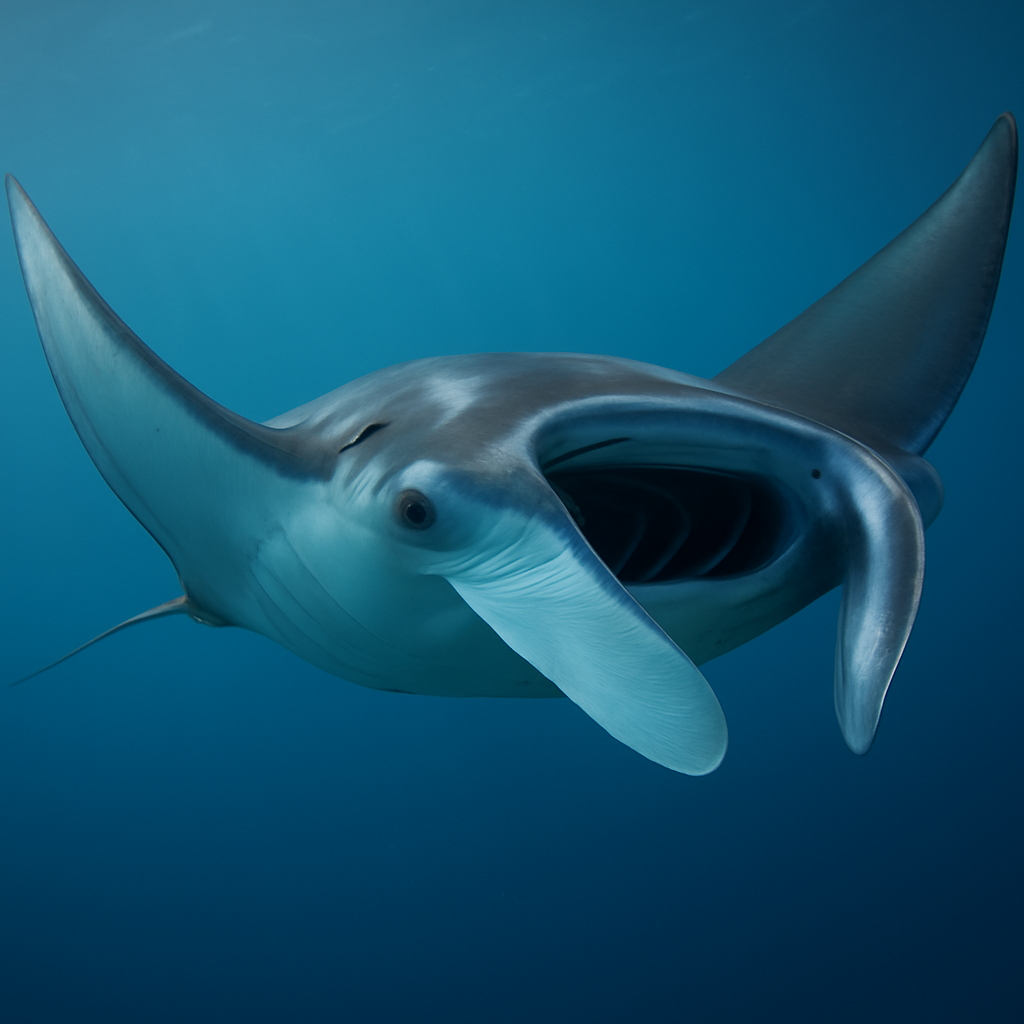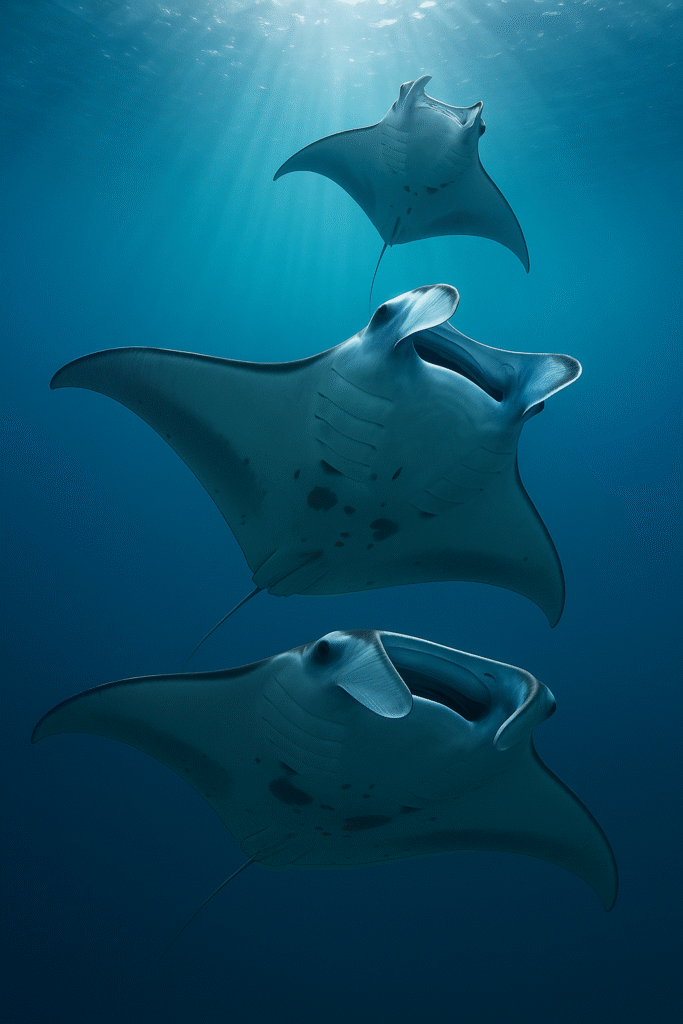When sunlight filters into the open blue, few spectacles rival the sight of a manta ray gliding through the water, its vast wings unfurling like a banner of the sea. More than fish, more than giants, manta rays are symbols of freedom, mystery, and survival in a changing ocean.
The Ocean’s Soaring Giant
Manta rays belong to the family Mobulidae and are among the largest rays on Earth. The reef manta (Mobula alfredi) can reach a wingspan of 5 meters, while the giant oceanic manta (Mobula birostris) stretches up to 7 meters across—nearly the size of a small aircraft. Despite their enormity, mantas are gentle giants, feeding not on large prey but on the smallest of life: zooplankton drifting with the currents.

Unlike their stingray cousins, mantas carry no venomous barb. Their defense is elegance itself, slipping through water with strokes that resemble flight. Watching a manta rise toward the surface is like witnessing the ocean dreaming of wings.
Brains and Behavior
Mantas are not only large—they are brilliant. Their brains, relative to body size, are the largest of any fish. This intelligence expresses itself in curiosity and social behavior. Divers often report mantas approaching with apparent interest, circling as though to inspect these strange bubble-blowing intruders.
Some scientists believe mantas may even recognize themselves in mirrors—a rare sign of self-awareness shared with dolphins, elephants, and great apes. In their quiet world of currents, mantas demonstrate that intelligence takes many forms beyond human measure.

The Dance of Feeding
Their most iconic ritual is the feeding ballet. In plankton-rich waters, mantas gather in groups, spiraling upward in elegant circles called feeding chains. With their cephalic fins unfurled like horns, they channel microscopic prey into their wide, cavernous mouths. The scene is both alien and profoundly harmonious—giants sustained by life forms invisible to the naked eye.
Mantas in Myth and Culture
Across the Pacific, mantas appear in Polynesian mythology as protectors and guides, bridging the world of humans and the sea. In Hawaiian culture, the manta (hāhālua) symbolizes spiritual energy and freedom, its sweeping motion echoing the pulse of the ocean itself. For many island peoples, mantas are not just animals but sacred beings—reminders of humility before nature.
Threats in a Changing Ocean
Yet, the manta ray swims a fragile path.
- Fishing pressures: Once hunted for their gill rakers—used in traditional medicine—mantas were driven into dangerous decline.
- Bycatch: Many are still caught unintentionally in nets and longlines.
- Climate change: Warming seas alter plankton blooms, reducing the food mantas depend on.
- Tourism pressure: While eco-tourism can protect mantas, unregulated interactions disturb their natural behavior.
The International Union for Conservation of Nature (IUCN) now lists both reef and oceanic mantas as vulnerable, edging toward endangered.
Conservation and Hope
There is, however, hope riding on their wings. Many countries, including Indonesia and Mexico, have declared mantas fully protected, recognizing their ecological and economic value. Divers are willing to travel across the world for a chance to see these creatures, creating powerful incentives for conservation over exploitation.

Marine protected areas, stricter fishing regulations, and community-driven ecotourism all form a safety net—fragile, but growing—for mantas and the ecosystems they represent.
A Symbol Beyond the Sea
The manta ray is more than an animal—it is an idea embodied.
- An idea of grace in scale.
- Of intelligence expressed not in words but in movement.
- Of fragility within abundance.
To encounter one in the wild is to see not a fish, but a messenger of the ocean’s vastness—a reminder that true strength is not in teeth or claws, but in balance with the invisible life that sustains the world.


Reply